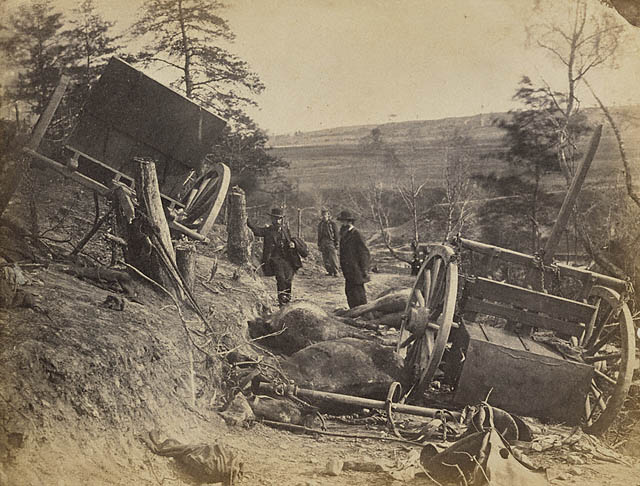I witnessed a U.S. Civil War re-enactment on my street today. It was a rather involved affair that replayed the Union’s defeat in the first Battle of Fredericksburg, but specifically I saw the slaughter of the Union’s Irish Brigade in Marye’s Heights. Here’s a quick description from Wikipedia:
The brigade suffered its most severe casualties in December [1862] during the Battle of Fredericksburg where its fighting force was reduced from over 1600 to 256. The brigade was involved in the northern battleground at Fredericksburg where they assaulted the sunken road in front of Marye’s Heights. Link.

I make no pretenses at being a Civil War enthusiast, in fact before I moved to Fredericksburg the Civil War was seldom if ever something I thought about seriously. Yet watching the re-enactment this afternoon gave me pause, for it was frighteningly realistic right down to the mass of Irish bodies at the bottom of Trench Hill. A grave and compelling sight. I couldn’t help but think of the scene in Martin Scorsese’s Gangs of New York where the Irish immigrants coming off the boat were given instant citizenship and sent immediately to fight for “their country.” Or when the New York Draft Riots broke out in that film, offering some powerful scenes that suggest a different face of intolerance and racism.
Interestingly enough, the wikipedia article on the Irish Brigade lists three theories of why an ethnically based group of soldiers was formed. They are as follows:
1) It warned Britain (which appeared to be favoring the Confederacy if not deliberating entry into the conflict on their behalf) that there could be Union-supported consequences in Ireland if Britain intervened (most of the brigade’s membership were known Irish revolutionaries), and
2) It served to solidify Irish support for the Union. The Irish were naturally predisposed to support the Confederacy due to their sympathy with the struggle for independence. They also didn’t want a flood of freed slaves to migrate north and compete for the lowly jobs for which they already had to scrabble.
3) It solidified the support of the Catholic minority for the Union cause. Having their own paid Catholic chaplain implied a social acceptance for Irish Catholics which had eluded them in the antebellum period. Their chaplain was Fr. William Corby, CSC, a Holy Cross priest and future president of the University of Notre Dame. He became famous for his giving absolution to the troops of the Irish Brigade before the Battle of Gettysburg.
I’m not sure how these theories hold up with contemporary scholars on the topic, but it was a fascinating discussion of the politics behind such a force that I, again, hadn’t thought a lick about. Anyway, I took some video footage of the final moments of the battle, raw and shakey, but this 30 seconds clip might give you a bit of an idea of the impressive verisimilitude of this reenactment.
[MEDIA=5]


Pingback: The Battle of Fredricksburg - Political Wrinkles